![Educaplus: Transformaciones termodinamicas [in Spanish]](https://openspace.infohio.org/static/newdesign/images/materials/default-thumbnail-index.png)
Observe the difference between the isobars, isotherms, adiabatic, and isocore transformations.
- Subject:
- Mathematics
- Science
- Material Type:
- Lesson Plan
- Provider:
- Educaplus (Jesús Peñas Cano)
- Date Added:
- 04/12/2021
![Educaplus: Transformaciones termodinamicas [in Spanish]](https://openspace.infohio.org/static/newdesign/images/materials/default-thumbnail-index.png)
Observe the difference between the isobars, isotherms, adiabatic, and isocore transformations.
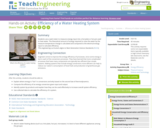
Students use a watt meter to measure energy input into a hot plate or hot pot used to heat water. The theoretical amount of energy required to raise the water by the measure temperature change is calculated and compared to the electrical energy input to calculate efficiency.
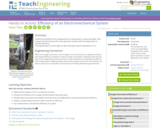
Students use LEGO® motors and generators to raise washers a measured height. They compare the work done by the motor-generator systems with the energy inputs to calculate efficiency.
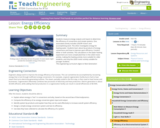
This Lesson provides two different activities that require students to measure energy outputs and inputs to determine the efficiency of conversions and simple systems. One of the activities includes Lego motors and accomplishing work. The other investigates energy for heating water. They learn about by products of energy conversions and how to improve upon efficiency. The teacher can choose to use either of these or both of these. The calculations in the water heating experiment are more complicated than in the Lego motor activity. Thus, the heating activity is suitable for older students, only the Lego motor activity suitable for younger students.
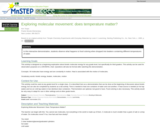
This is a teacher demonstration used to show an example of kinetic molecular energy using food coloring and water. The students are also given opportunity to develop their own questions and tests.
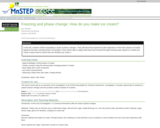
This activity is an extension where students freeze a liquid, making ice cream.

From the Glenn Research Center at NASA, read about the law of conservation of energy. Included are formulas and many links to key terms.

Build your own miniature "greenhouse" out of a plastic container and plastic wrap, and fill it with different things such as dirt and sand to observe the effect this has on temperature. Monitor the temperature using temperature probes and digitally plot the data on the graphs provided in the activity.

Using understandable words and exceptional graphics, this page describes the transfer of energy by means of the convection process. Contains several links to related topics.
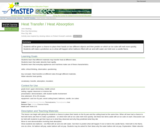
This activity is a classroom demonstration activity in which students make predictions and explore the concepts and applications of heat transfer and heat absorption.

Georgia State University Physics Department privides an incredibly thorough treatment of the laws of thermodynamics. Multiple pages; many informative graphics; opportunities to practice problems and receive immediate feedback.

This classroom activity is an inquiry based lesson where students observe and measure temperature changes in order to determine which fabrics are best at keeping in heat.

Examination of Second of Thermodynamics (endo/exothermic and entropy) using a thought story, rubber band inquiry, discrepant event and lecture.
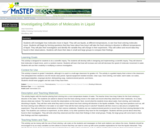
This activity is a guided inquiry of how molecules move in liquid. Students develop questions, use their observation skills to describe what they saw, record and analyze their findings, and use their data to begin to hypothesize what is happening in the investigation.
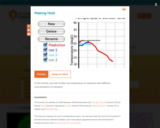
In this activity the temperature of a reaction is monitored for different concentrations of reactants.
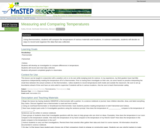
This activity is an inquiry lesson where students learn how to accurately read a thermometer and then set up an investigation to compare the temperatures of different materials or locations.

Use this site to learn about the scientific work of physicist, Max Planck (1858-1947 CE), whose studies in radiation and light earned him the 1918 Nobel Prize in Physics. Read his Nobel Lecture, "The genesis and present state of development of the quantum theory." Also provided at this website, is the 1918 Presentation Speech given by Dr. A. G. Ekstrand, which overviews Planck's accomplishments and contributions to the world of physics.

Students will use science skills of observing, describing and measuring in the context of Making Ice Cream. Students will understand the concept that physical properties can change.

The People's Physics Book v3 is intended to be used as one small part of a multifaceted strategy to teach physics conceptually and mathematically

Learn how friction causes a material to heat up and melt. What happens on an atomic level when you rub two objects together?